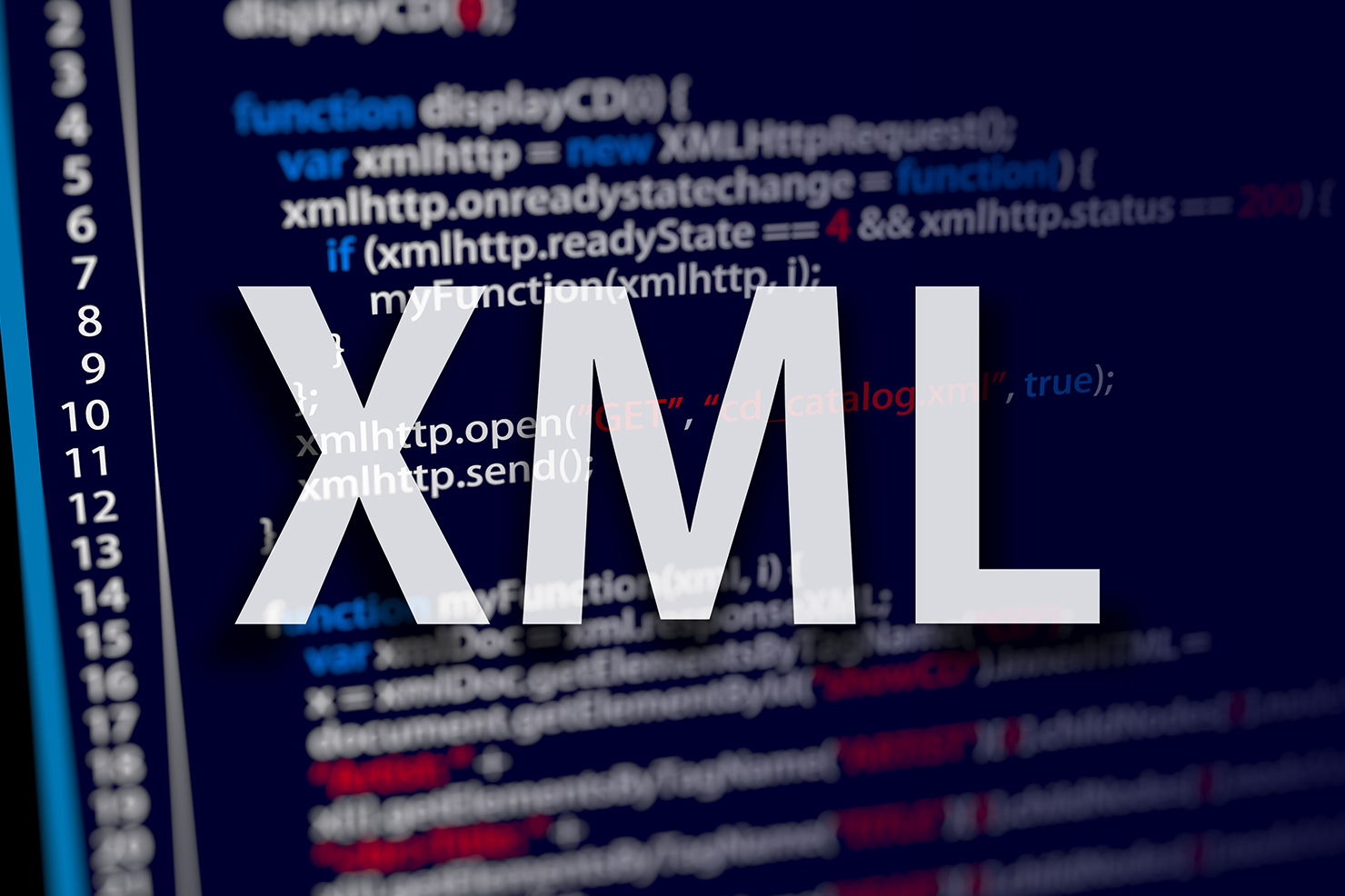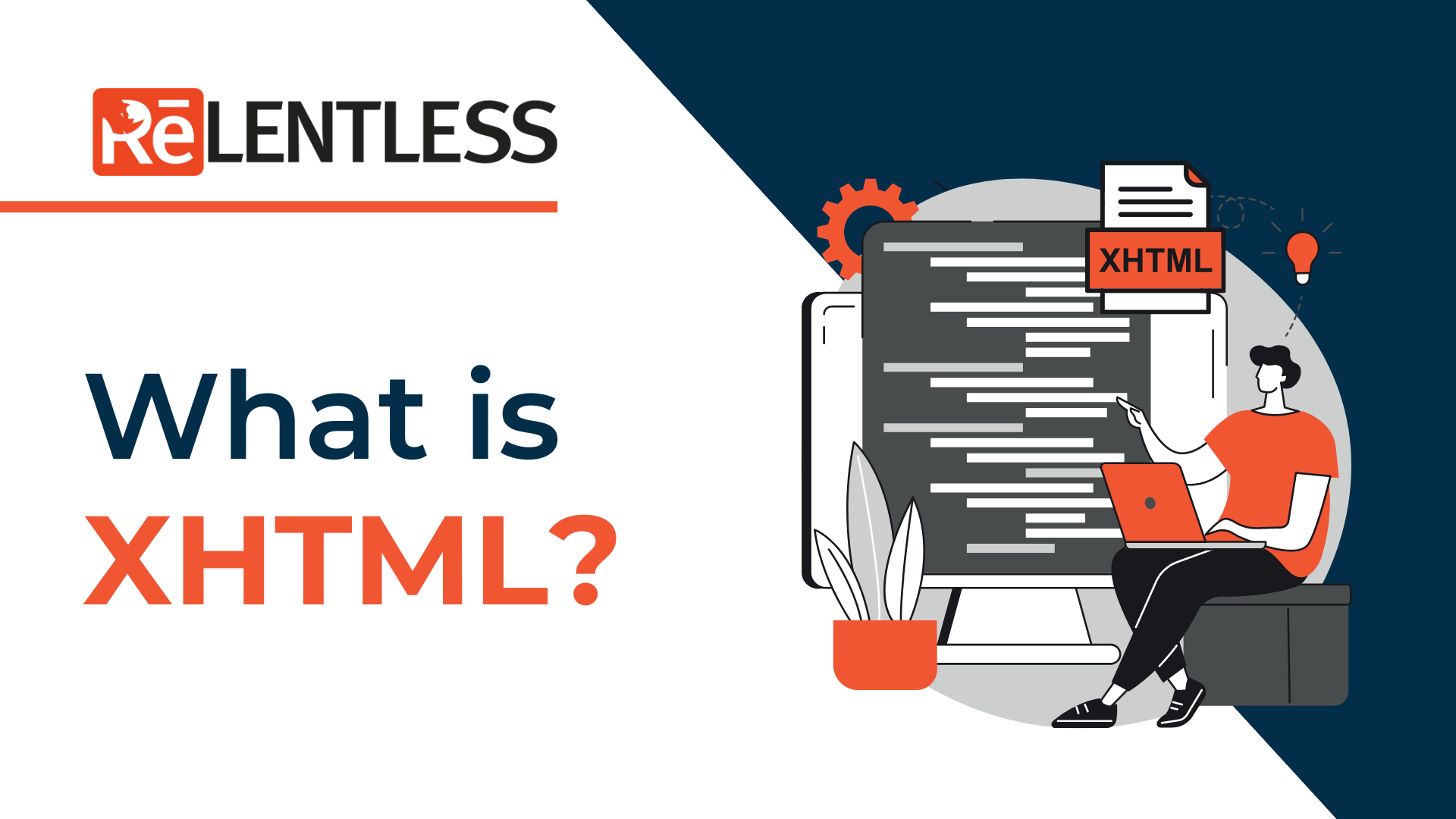XHTML stands for EXtensible HyperText Markup Language, a “combination” of HTML and XML languages.
Extensible Markup Language (XML) is a markup language and file format that stores, transmits, and reconstructs arbitrary data. Although XHTML is nearly identical to HTML (HyperText Markup Language), it is more crucial to design your code correctly since XHTML is more stringent in syntax and case sensitivity than HTML.
Unlike HTML, which demands a lenient HTML-specific parser, XHTML documents are well-formed and parsed by standard XML parsers. These XML parsers are software libraries that enable client applications to access XML documents. It involves checking and validating the XML document for proper format.
What is XHTML?
XHTML is a Standard Generalized Markup Language (SGML) subgroup, a system for managing and identifying document parts, such as titles, headings, paragraphs, or pictures, using labeling.
While considered a replacement for the original web markup language (HTML), from 2001 to 2011, XHTML was one of the most widely used languages for creating documents on the World Wide Web. The web eventually returned to HTML because most website developers recommended a more convenient language. Even though their website uses XHTML, the W3C (World Wide Web Consortium) strongly supported HTML5 in 2004. There are three XHTML 1.0 document types for XHTML pages: strict, transitional, and frameset. Moreover, the W3C runs XHTML 1.0 Strict.

While retaining all HTML qualities, XHTML introduces stricter rules for designing pages to get closer to “perfect” code. So, XHTML enables the creation of websites that are not dependent on the display device or browser. Furthermore, all modern browsers and devices, such as smartphones, computers, PDAs, and netbooks, will display the site correctly.
On an excellent XHTML, all attributes must be quoted, and to save space, you can remove the quotes around attributes. For instance, when you open a bold () element followed by an italics () element, you must close the italics element () before closing the bold element (). Furthermore, an end tag is necessary for all XHTML elements. Elements with only one tag must have a closing slash (/) at the end.
However, XHTML 1.0 is similar to HTML 4.0 in many ways, but it is stricter and cleaner. For example, a webpage that utilizes the “XHTML Strict” doctype (DTD) shouldn’t contain any errors or invalid tags, leaving no room for ambiguity. On the other hand, most XHTML sites use the “XHTML Transitional” doctype, which does not demand perfect syntax and supports HTML 4.01 tags.
In addition, XHTML standards include empty elements, well-formed documents, attribute names in lower case, attribute minimization, end tags for non-empty elements, white space handling in attribute values, and others. If a document does not meet these standards, the browser acts as a compiler and does not display it.
Web browser designers are continuously experimenting with new markup languages to express their ideas, and it is relatively simple to add new elements or element attributes to XML.

What are the features of XHTML?
Despite some similarities with the standard generalized markup language-based HTML, there are significant differences that distinguish XHTML. Compared to HTML, XHTML is based on Extensible Markup Language (XML), is more strict, and does not allow any lapses in coding or structure. The following are some of the features that contribute to the XHTML structure:
- XHTML tags must have closing tags and be adequately enclosed, resulting in cleaner code. Since XML rules apply in XHTML, every element must have both a start and an end tag, but the same tag may be used for both roles in case of empty element content, e.g. <meta name=”foo” content=”bar”></meta>. An error message will be displayed in case of violation when serving an XHTML document to a conforming browser. Furthermore, XHTML forbids the omission of any tags or the use of attribute minimization.
- Since XHTML documents are lean, they take less bandwidth, saving money, especially if the website has thousands of pages.
- XHTML documents are well-formed and shared with wireless devices and other specialized web environments.
- XHTML new developments will be displayed in XML (where XHTML is an application). Creating XHTML documents is very similar to creating any other type of XML document because XHTML is an XML-based markup language. You must first get used to the XHTML language before creating a document with XHTML elements and attributes using a text editor or XML development tool.
- XHTML and CSS (Cascading Style Sheets) work together to build easily updated web pages. XHTML and CSS have an eternal bond together. CSS saves bandwidth by allowing you to reuse the same code for different types of XHTML elements.
What is the structure of XHTML modularization?
The XHTML family aims to facilitate extensions as an enhanced version of HTML as an improved version of HTML.
The structure of XHTML modularization is straightforward, and a basic framework of XHTML modules allows for creating XHTML-conforming markup languages. Such new languages should use the basic framework, W3C-defined modules, or other XHTML-provided modules. Modules combine new and existing features when developing content and designing new user agents.
The modules work together within the XHTML framework to classify a task or client-specific markup language based on the familiar structure. The new modularized markup language is appropriate for creating XHTML-compliant content, and documents created with this new markup language will work on any XHTML-compliant client. Meanwhile, the content will be portable to existing HTML 4 browsers in many cases.
Which are the components of XHTML?

The elements of the XHTML document structure define each component. It consists of three major components:
- Document Type Definition (DTD)
- Document Type Definition (DTD) was previously optional in HTML, but it is now required in XHTML. So each XHTML document must begin with a DTD declaration and a line of code indicating that you are about to start writing XHTML code. The DTD specifies the language or script used to encode the text. Additionally, DTD comes in three varieties: transitional DTD, strict DTD, and frameset DTD.
- Head
- The heading section includes information about the document, its title, and other attributes that are not considered document content. The head is not displayed by default; nevertheless, You can override this with a style sheet for a particular use.
- Body
- The body tag provides the content of web pages with multiple tags. A user agent can use the content in various ways. Visual browsers, for instance, can present it as images, text, colors, and graphics; a search engine can create an index prioritized based on where text appears.
Remarks
Browsers became more lenient in parsing webpage source code as HTML evolved over the first few decades of the web. As a result, browsers render websites consistently. Therefore, one of the primary goals of XHTML was to confirm that web pages looked the same in different browsers.
Rather than HTML, XHTML is based on XML, and XHTML-coded webpages must follow a strict XML syntax. There are two reasons for the advancement of XHTML. First, it establishes more rigorous standards for creating web pages, minimizing browser incompatibilities. As a result, it is compatible with all major browsers. Lastly, it establishes a standard that many devices can use.
It also seems to be used in odd places such as applications and whenever the developer decides to go “old school” or “safe.” For example, throwing in a title in WordPress with the “<center>title</center>” tags.






